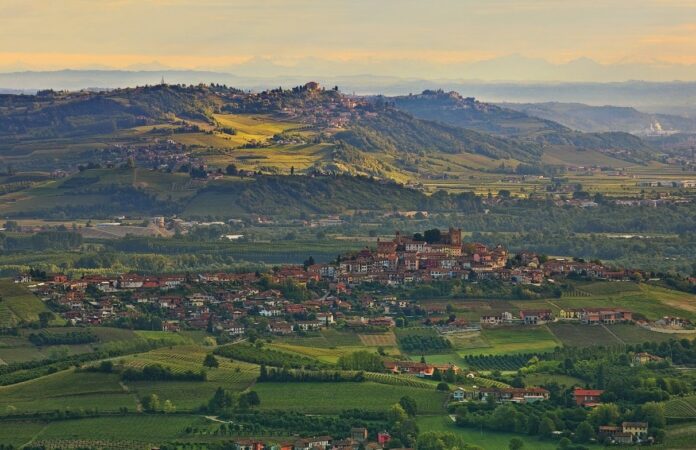
Discover the wines of Piedmont, starting from the history of viticulture, terroir and main production areas of Piedmont. We will talk about red wines of Piedmont and white wines of Piedmont, the main grape varieties, DOC and DOCG, but also the best wines of Piedmont, the most famous producers and the typical regional gastronomy.
Do you want to show us a winery or a wine? Write to us!
INDEX:
- History of Piedmontese viticulture
- Terroir and production areas of Piedmontese wines
- Varieties and Piedmontese DOCG and DOC wines
- Best Piedmontese wines
- Typical regional gastronomy
HISTORY OF PIEDMONT VITICULTURE
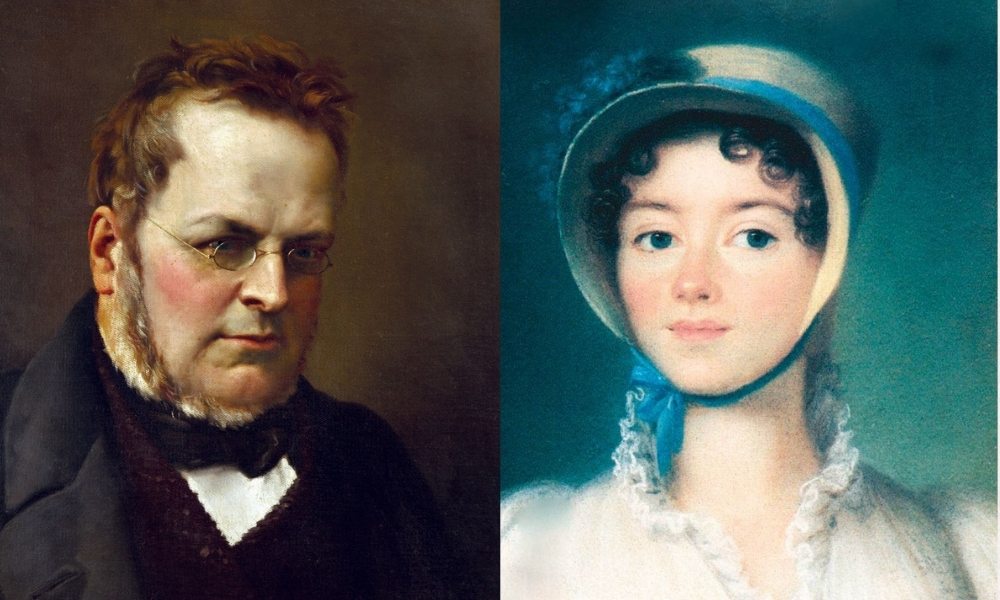
Wine in Piedmont has a very ancient history, which sees its birth thanks to the Celtic-Ligurian peoples who inhabited the region and practiced viticulture as early as the sixth century BC.
As early as the Middle Ages, attention shifts to the definition of the most suitable wine production areas: in particular, Barbesino (now known as Grignolino) vines were planted in Monferrato and Nebbiolo in Turin and Upper Piedmont.
In the nineteenth century Piedmontese red wines begin to take on the characteristics of modern Piedmontese wines. Barolo was born in 1830 thanks to the work of the Marquises Falletti and Count Camillo Benso di Cavour.
Later also Barbaresco was born, another great expression of Nebbiolo, thanks to Domizio Cavazza, founder of the Cantine Sociali di Barbaresco and director of the renowned oenological school of Alba.
In 1900 the succession of the World Wars, the escape from the countryside and the migration to the Americas led to a drastic abandonment of viticulture, sharply halving the number of hectares cultivated in less than 20 years.
In the 1980s there was a great return to the land in the Langhe, Monferrato and Roero areas which led to the reinterpretation of the great wines of these areas: modern production methods inspired by the great wines of Burgundy and Bordeaux were used, aiming at wines More elegant and balanced, and moving away from the rustic and austere imprint.
TERROIR AND PRODUCTION AREAS OF PIEDMONT WINES
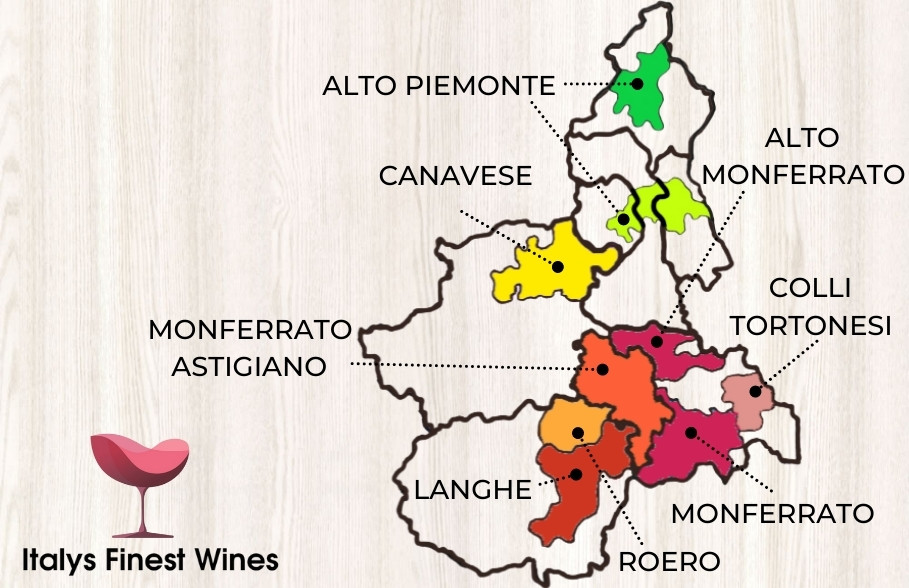
What are the typical terroirs of Piedmont and the production areas of Piedmontese wines? Let’s discover the main wine-growing areas of Piedmont.
Piedmont is a region characterized by a mixed landscape, in which hills (30.3%), plains (26.4%) and mountains (43.3%) alternate. The climate is continental and is characterized by long cold, snowy winters and hot summers, with significant temperature variations that allow excellent ripening of late varieties such as Nebbiolo.
The great strength of Piedmont is inherent in the heterogeneity of the territory: the various production areas differ significantly from each other, giving a unique typicality to Piedmontese wines. We can therefore distinguish several fundamental production areas: the Langhe, Roero, Monferrato, the Tortonesi hills, the Canavese and Upper Piedmont.
Langhe
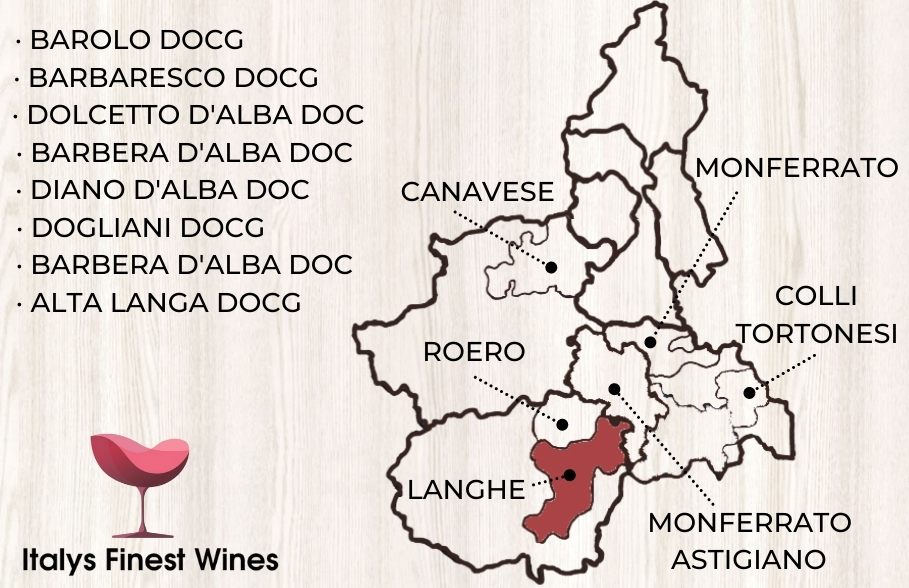
Among the Piedmontese wines certainly one of the most important territories is the Langhe. The Langhe extend into the lower Piedmont, between the provinces of Cuneo and Asti, and are characterized by fantastic hilly and foggy landscapes, with predominantly calcareous-clayey soils that give the Langhe wines complexity and structure.
The Tortonian area of the hills of Barolo and La Morra stands out, with soils characterized by a strong sandy component, and the Helvetian area of the hills of Monforte and Serralunga.
In this area famous Piedmontese red wines are produced such as Barolo, Barbaresco, Dolcetto d’Alba, Barbera d’Alba, while heading towards the Asti area there is part of the production of Asti Spumante wines (Sweet sparkling wine ) and Moscato d’Asti (still sweet wine).
The Langhe also produces the Alta Langa DOCG classic method sparkling wines.
Roero
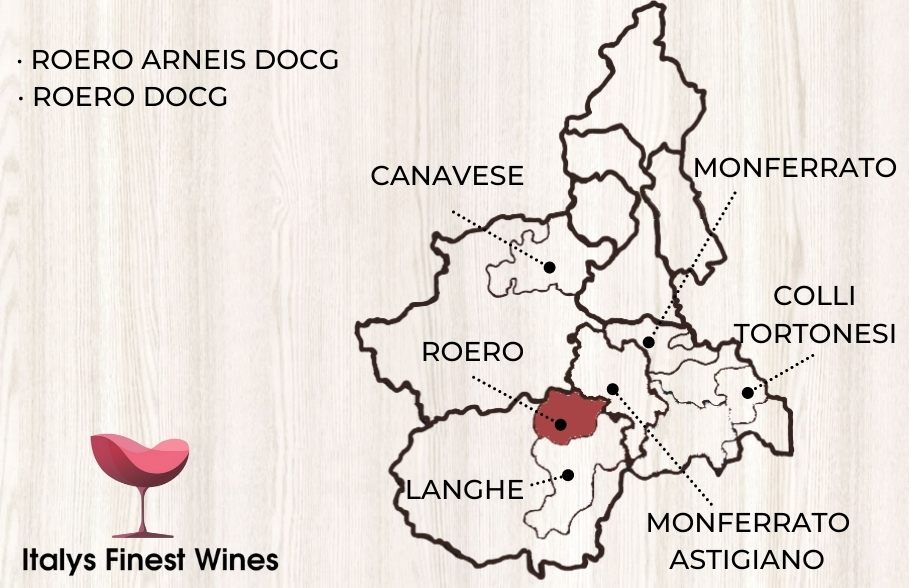
One of the most important production areas for Piedmontese wines is certainly Roero, a historic hilly region of lower Piedmont that rises east of the Tanaro river.
It has soils rich in marine sediments and sandstone rocks, with calcareous-clayey layers mixed with sand and is characterized by low rainfall.
The most common varieties in this production area are Arneis, an ancient native Piedmontese white grape variety from which the famous Piedmontese white wine Roero Arneis DOCG is produced, and Nebbiolo, from which the Piedmontese red wine Roero DOCG is obtained.
Monferrato
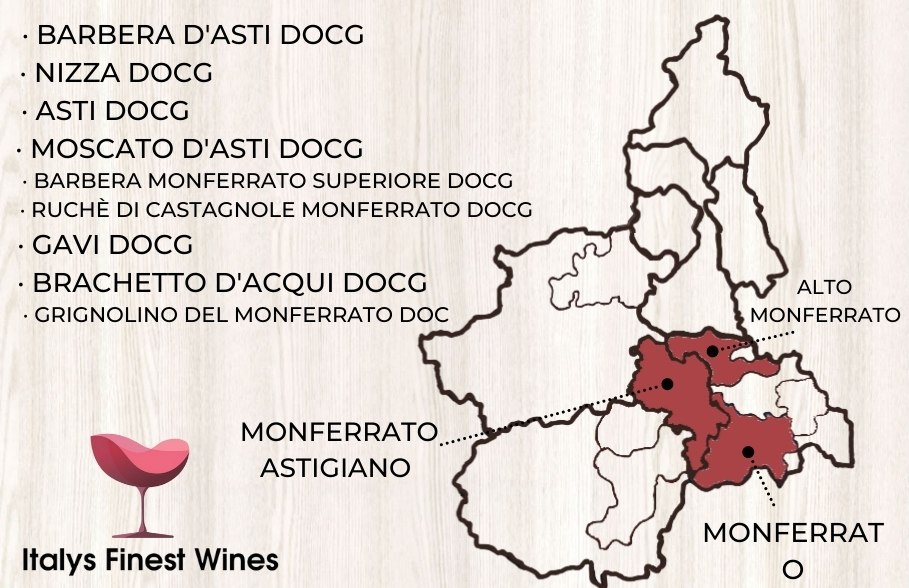
Monferrato is the largest production area of Piedmontese wines, and includes the provinces of Alessandria and Asti. This area is therefore subdivided into macro-areas that have predominantly sandy soils, with a limestone and alkaline structure and rich in marine sediments.
In the Asti Monferrato great interpretations of Barbera are produced, such as Barbera d’Asti, Nizza, Barbera del Monferrato Superiore, but also many other Piedmontese red wines such as Ruché di Castagnole Monferrato, Calosso, obtained from the native leg of partridge , and Albarossa.
Among the most resonant white wines produced in the Monferrato Astigiano area we find first of all Moscato, with its Asti DOCG (sweet sparkling wine) and Moscato d’Asti DOCG (still sweet wine) denominations. Moscato also produces dry Piedmontese white wines, which however represent a small niche compared to the sweet and semi-sweet versions.
Alto Monferrato
The Alto Monferrato area, which corresponds to the northern area of the province of Alessandria, is instead home to the great Piedmontese white wines such as the famous Gavi DOCG, obtained from 100% Cortese grapes.
Alto Monferrato, and in particular the Acquese area, is also the production center of some of the best aromatic Piedmontese wines such as
D’Acqui and Moscato d’Asti Strevi.
Colli Tortonesi
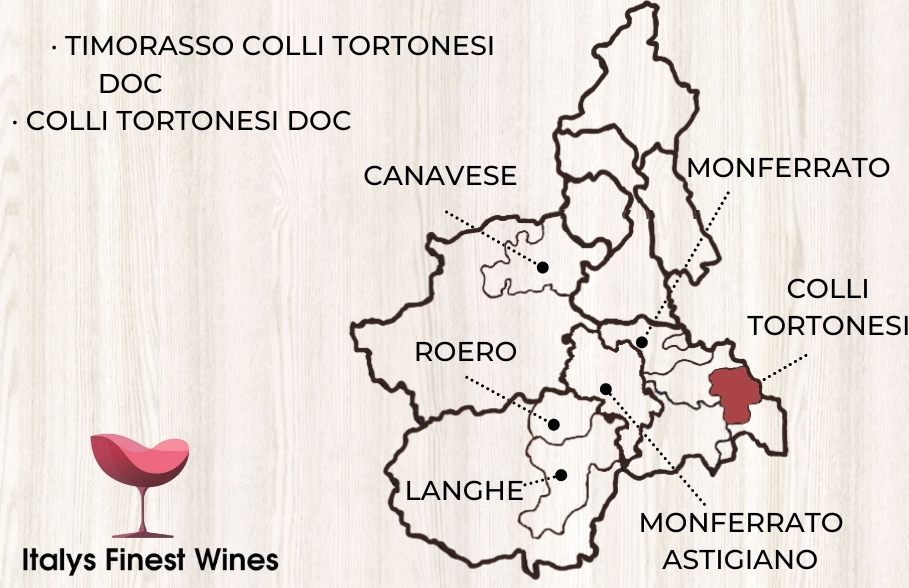
Among the Piedmontese wines, the Colli Tortonesi area deserves a mention.
In the south-eastern area of the province of Alessandria, precisely in the area of the Tortonesi Hills, Timorasso (also called Derthona Timorasso) is produced, a niche but very interesting Piedmontese white wine.
To learn more, read the paragraph dedicated to Timorasso.
Canavese
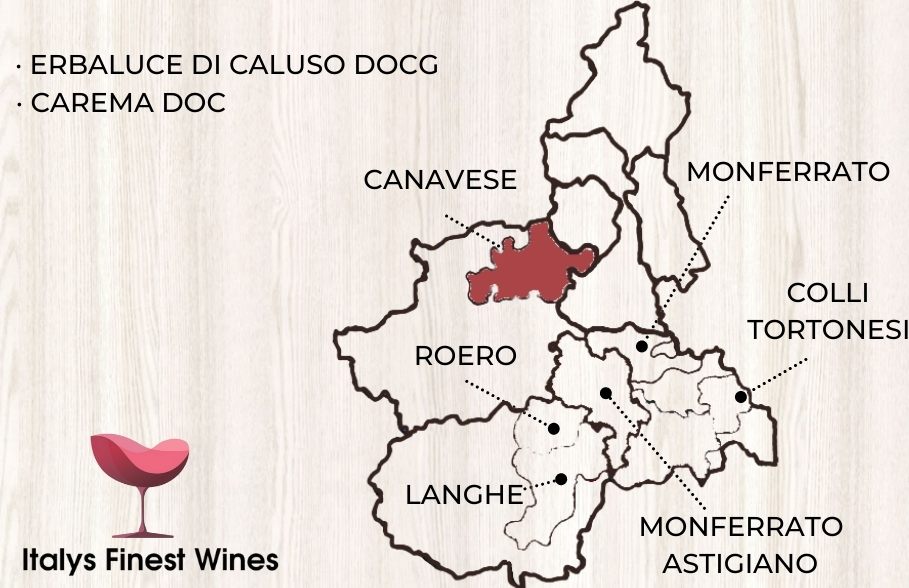
Piedmontese wines from the Canavese area are produced in an extended area between the province of Turin and the Aosta Valley. A feature that distinguishes this area are the morainic soils, or soils made up of glacial deposits.
This is the area of production of typical Piedmontese reds based on Nebbiolo, Bonarda and Freisa, but above all of the Erbaluce di Caluso DOCG, a Piedmontese passito or sparkling white wine that is unique in terms of freshness and complexity.
To learn more about Erbaluce di Caluso wine, read the paragraph dedicated to Erbaluce.
Alto Piemonte
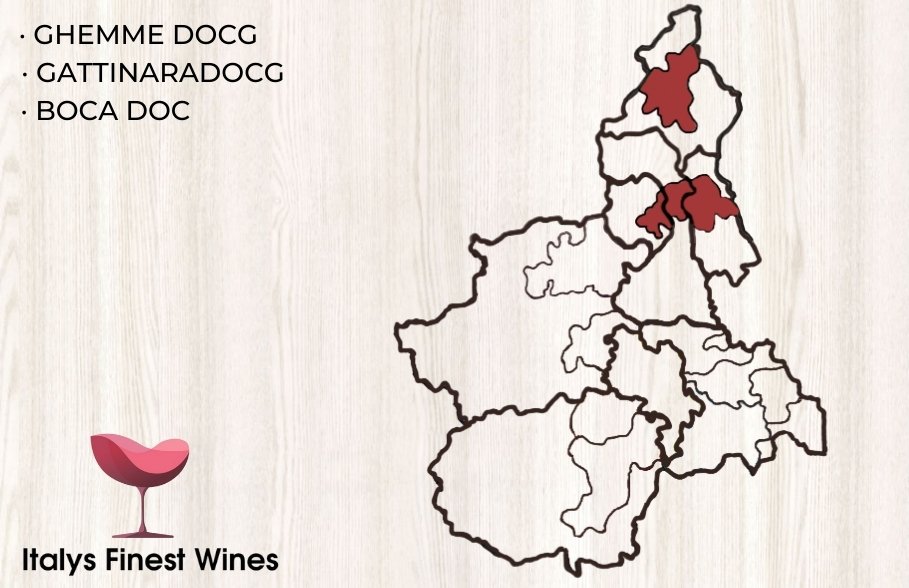
Among the Piedmontese wines of great interest are the wines of Upper Piedmont, an area that includes the pedo-mountain areas of Novara, Biella and Vercelli up to Monte Rosa.
The rocky soils, rich in sand and clay, blend perfectly with Nebbiolo, widely bred in Upper Piedmont, and from which particularly refined wines such as the historic Gattinara DOCG, Lessona DOC and DOCG Ghemme are born.
DATI SUI VINI DEL PIEMONTE
- Vineyard area in Piedmont: ≅ 48,100 hectares
- Piedmontese red and rosé wines: 66%
- Piedmontese white wines: 34%
- Designation of origin of Piedmontese wines: 18 DOCG, 41 DOC, 0 IGT
- Export of Piedmontese wines: 60%
VARIETIES OF PIEDMONT – PIEDMONT DOC and DOCG WINES
Piedmont has a vineyard area of about 48,000 hectares, with a large prevalence of historical and traditional indigenous varieties. The main training system adopted to produce Piedmontese wines is the guyot, while for varieties such as Nebbiolo and Erbaluce in some cases the pergola also resists.
Indigenous variety of Piedmontese wines – Piedmont boasts countless fine indigenous varieties, both white and black. Among these stand out the historic Barbera, which occupies about 30% of the wine production of Piedmont, the Dolcetto, a Piedmontese variety widespread in southern Piedmont, and Nebbiolo, considered one of the noblest grapes in the world.
Other traditional Piedmontese black grape varieties are Grignolino, Pelaverga, Freisa, Ruchè, Croatina, Vespolina, Piedmontese Bonarda (or Uva rara) and black Malvasia di Schierano and di Casorzo.
Among the white grape varieties from which Piedmontese wines are produced we find first of all the Moscato Bianco di Canelli, produced in particular in the province of Asti, which plays a leading role occupying about 22% of the vineyard area of Piedmont.
Not least the Cortese grape, a great Piedmontese white variety widespread in the Tortona area and in Gavi, the Erbaluce del Canavese and the Arneis, very common in the Roero area. Other niche but very interesting white grape varieties are Timorasso and Favorita, both native white grape varieties that have rediscovered an excellent terroir in the Langhe and Tortona hills areas.
Non-native varieties of Piedmontese wines – Among the most widespread international varieties in Piedmont, Pinot Noir, brother of Nebbiolo from beyond the Alps, mainly used as a base for important Classic Method sparkling wines, and Chardonnay, from which still white wines with great evolution or Sparkling wines both alone and blended with Pinot Noir.
Nebbiolo – Wines of Piedmont
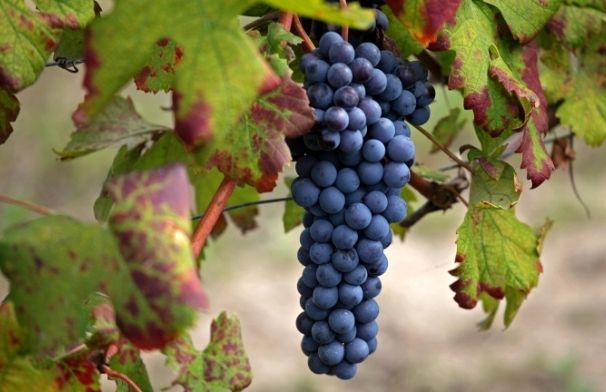
Hectares in Piedmont: 4.480
Piedmontese wines produced with Nebbiolo: Barolo DOCG – Barbaresco DOCG – Gattinara DOCG – Ghemme DOCG – Roero DOCG – Terre Alfieri DOCG – Langhe Nebbiolo DOC – Nebbiolo d’Alba DOC – Carema DOC – Canavese Nebbiolo DOC – Albugnano DOC – Spanna DOC – Lessona DOC – Valli Ossolane DOC
A noble and elegant grape, Nebbiolo is a native variety widespread throughout Piedmont, which meets an area of excellence in the Langhe-Roero and Upper Piedmont, where it is known as Spanna. It is a late variety with great character, capable of translating the territory in a unique way.
It reaches the qualitative heights in the calcareous-marly-clayey soils typical of the Langhe, with powerful and long-lived wines such as the fantastic Barolo and Barbaresco, but which also adapts well to the most severe climate and morainic soils of Upper Piedmont giving life to Piedmontese wines Of great personality such as Gattinara and Ghemme.
In Roero, the rocky and sandy soils of marine origin enhance the freshness and fruit of Nebbiolo, giving life to warm and fragrant Piedmontese wines with great finesse.
To learn more, read the article dedicated to Nebbiolo.
Barbera – Vini Piemontesi
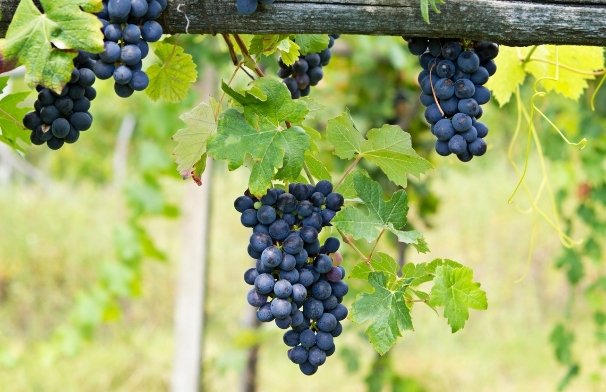
Hectares in Piedmont: 13.900
Piedmontese wines produced with Barbera: Barbera d’Asti DOCG – Barbera del Monferrato Superiore DOCG – Nizza DOCG – Barbera d’Alba DOC – Barbera del Monferrato DOC – Pinerolese Barbera DOC – Canavese Barbera DOC – Colli Tortonesi Barbera DOC – Saluzzesi Hills DOC
«Generosa Barbera.
We think we drink it
To be alone at sea
Challenging a storm. ‘
Giosuè Carducci
Barbera is the most widespread variety among Piedmontese wines and occupies about 30% of the total production. It is a medium-late variety that adapts very well to the pedo-climatic environment: just think that Barbera is also widespread in California, South America and other wine regions of the world. It is distinguished by the intense blue colored grape, with great acidity.
It is also a particularly versatile variety, which can be appreciated with young sparkling and drinkable wines or in more structured versions aged in barriques.
The wines obtained from Barbera are of an intense ruby red, with strong aromas of red fruits and undergrowth, hints of rose and spices, elegant and structured, with a marked acidity in youth that tends to soften with aging.
It is mainly bred in the territories of Alba, Alessandria, Colli Tortonesi, and in particular in the Monferrato Astigiano, where famous interpretations of Barbera are born such as the recent Nizza DOCG appellation, or Barbera del Monferrato Superiore DOCG and Barbera d’Asti DOCG.
Barbera d’Asti DOCG
Piedmontese red wine produced in the ” base ” and ” Superiore ” typologies in a production area between the provinces of Asti and Alessandria. Here Barbera is typically bred with the Guyot pruning system which allows it to reach high quality levels.
Barbera del Monferrato Superiore DOCG
Piedmontese wine produced from the Barbera vine of the same name in the provinces of Asti and Alessandria, in a large production area that overlaps with that of the Barbera d’Asti DOCG.
Barbera, always bred with the Guyot, is the basis of Barbera del Monferrato Superiore (min.85%) and is blended with traditional black grape varieties such as Grignolino, Freisa and Dolcetto together or alone for a maximum of 15%.
Nizza DOCG
Piedmontese red wine produced from the best Barbera grapes, grown in 18 neighboring municipalities in Nizza Monferrato, in the province of Asti. Formerly a sub-area of Barbera d’Asti, Nizza DOCG became independent in 2015. Although recent, Nizza DOCG represents the cru of choice for Barbera and is the spearhead of Monferrato Astigiano.
Nizza DOCG wines are made from 100% Barbera grapes and require a minimum aging of 18 months, which become 30 in the ” Riserva ” type.
Dolcetto – Wines of Piedmont
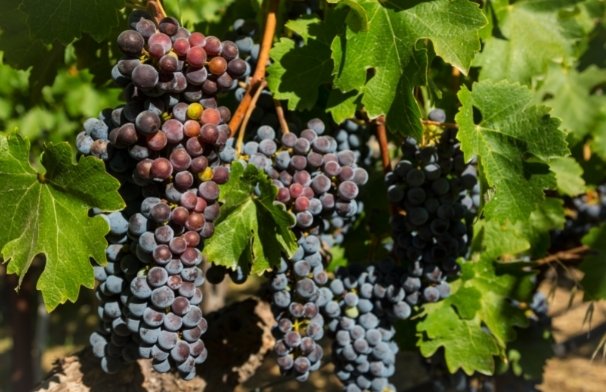
Hectares in Piedmont: 6,000
Piedmontese wines produced with Dolcetto: Dolcetto di Dogliani DOCG – Dolcetto di Diano d’Alba DOCG – Dolcetto di Ovada DOCG – Dolcetto D’Asti DOC – Dolcetto d’Acqui DOC – Dolcetto Pinerolese DOC
The name ” dolcetto ” probably comes from the characteristic sweetness of the ripe grape and has always been considered the daily Piedmontese wine par excellence.
With about 6000 hectares of vineyard extension, Dolcetto is the second most widespread black grape variety in Piedmont.
Its cultivation is concentrated in the south of the region, in particular in Monferrato in the areas of Acqui, Ovada and on the Tortonesi Hills, but also in the Langhe and Dogliani, in the province of Cuneo.
The wines produced from Dolcetto are the most consumed in Piedmont, as unlike varieties such as Nebbiolo and Barbera, Dolcetto wines are excellent to drink young, as they have a moderate acidity accompanied by a good alcohol content and a persuasive softness On the palate.
Grignolino – Wines of Piedmont
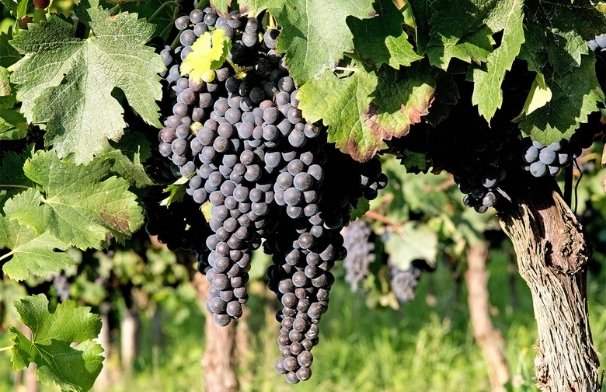
Hectares in Piedmont: 900
Piedmontese wines produced with Grignolino: Grignolino d’Asti DOC – Grignolino del Monferrato Casalese DOC – Piedmont Grignolino DOC
Black grape variety particularly widespread in the Asti Hills, Monferrato Casalese and Langa Alba, often vinified alone but also widely used as a complementary variety in Piedmontese cuts.
The name comes from the Asti dialect term ” grignòle ” which means grape seeds, as it is a typical characteristic of the Grignolino grape that it contains at least 3 seeds. It is precisely for this peculiarity that Grignolino is considered a difficult variety to vinify, as the presence of tannins in the grape seeds is often excessive. As a result, it is often blended with traditional Piedmontese varieties such as Freisa and Barbera.
It looks like a Piedmontese wine with a light red color, in which floral aromas and hints of white pepper stand out. On the palate it is tannic and sharp in its youth but reveals earthy tertiary notes, of tobacco and licorice during aging.
Ruchè – Wines of Piedmont
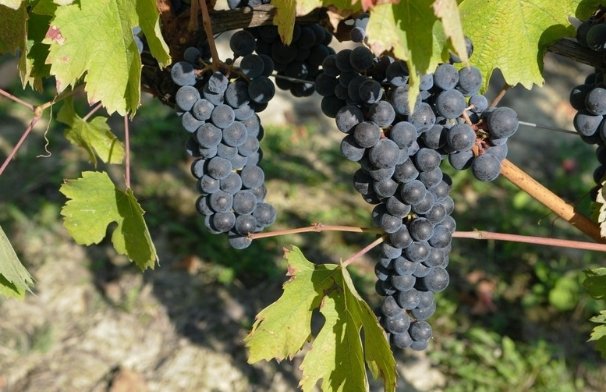
Hectares in Piedmont: 110
Piedmontese wines produced with Ruchè: Ruchè di Castagnole Monferrato DOCG
Ruchè is an ancient Piedmontese variety with an uncertain etymology, probably arrived in Piedmont in the twelfth century through Cistercian monks from Burgundy. It was rediscovered in the last century thanks to the monk Don Giacomo Cauda who found an old abandoned vineyard within the parish and tried to make wine.
To date, Ruchè is bred in the province of Asti and in particular in the municipality of Castagnole Monferrato and other neighboring countries, where the Ruche di Castagnole Monferrato DOCG red wine is born, considered one of the most interesting Piedmontese red wines.
Moscato Bianco – Wines of Piedmont
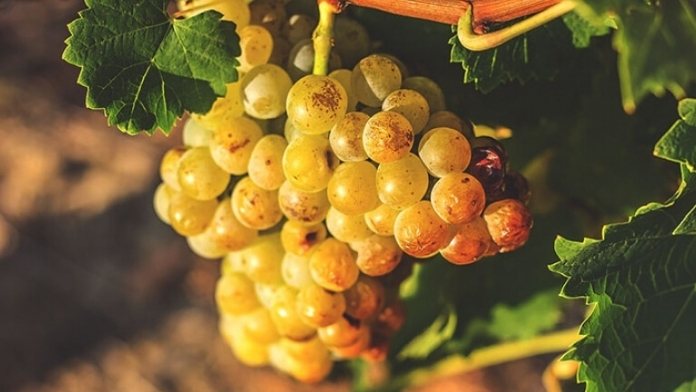
Hectares in Piedmont: 9750
Piedmontese wines produced with Moscato Bianco: Moscato d’Asti DOCG – Asti Spumante DOCG
Moscato bianco (or Moscato bianco di Canelli) is the most cultivated white grape variety in Piedmont. It represents 21% of the total production of Piedmontese wines and is grown on a total area of about 9,750 hectares. Moscato Bianco is grown mainly in the province of Cuneo and Asti, where it is used to produce the famous sweet or semi-sweet Piedmontese wines Asti Spumante DOCG and Moscato d’Asti DOCG.
Asti wine boasts the distinction of being the most exported Italian DOCG abroad and is also the best known sweet sparkling wine in the world. Moscato also produces dry white Piedmontese wines such as Asti DOCG Secco which, however, represent a small niche compared to the sweet and semi-sweet versions.
Moscato Bianco, the best known of the Moscato family, is an aromatic vine particularly rich in terpenes which give the wines an indistinguishable and intense floral aroma.
Erbaluce – Vini Piemontesi
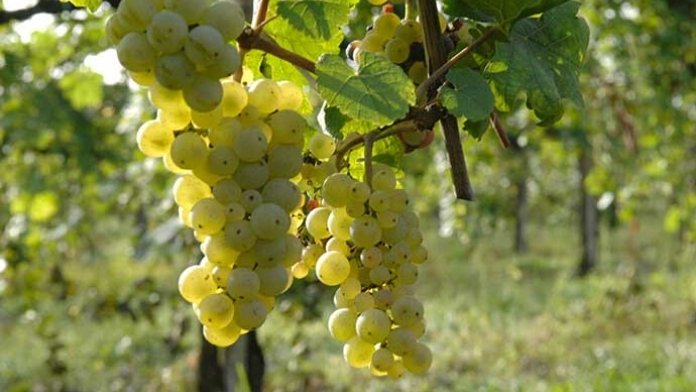
Hectares in Piedmont: 242
Piedmontese wines produced with Erbaluce: Erbaluce di Caluso DOCG – Erbaluce di Caluso passito DOCG – Erbaluce di Caluso sparkling DOCG
Among the Piedmontese white wines, Erbaluce must be taken into consideration. This wine is produced in the Canavese area, the historical area between Turin and the Aosta Valley bordered to the east by Biella and Vercelli. To date, it is estimated that the Erbaluce grape is grown on an area of about 242 hectares mainly located within the province of Turin.
The Erbaluce grape is used to produce typical Canavese wines such as the fine Piedmontese white wine DOC Erbaluce di Caluso and Canavese bianco and the DOCG Erbaluce di Caluso passito and Erbaluce di Caluso sparkling wine.
Erbaluce is a very versatile grape variety, in fact, in addition to being vinified in white, it is used for the creation of sparkling wine bases and passito wines of great finesse. The Piedmontese wines produced by Erbaluce boast a good acidity, structure and eloquent aromas with a floral character, which often recall wild flowers, hawthorn and acacia.
Cortese – Vini Piemontesi
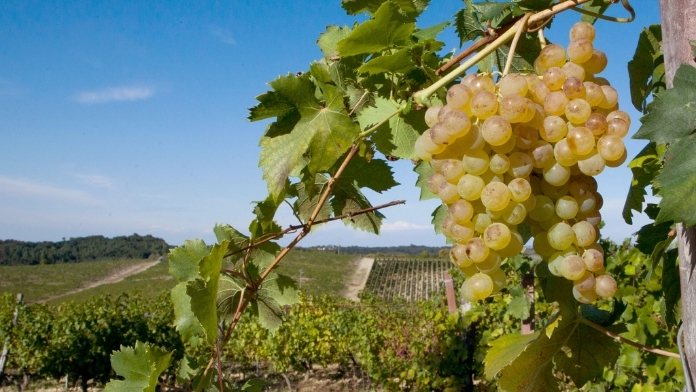
Hectares in Piedmont: 3000
Piedmontese wines produced with Cortese: Gavi DOCG – Piemonte Cortese DOC – Cortese dell’Alto Ferrato – Colli Tortonesi Cortese DOC
Among the Piedmontese white wines, Cortese is the second most widespread white grape variety in Piedmont: it constitutes 6% of the total production of the region and is grown on an area of about 3000 hectares.
The Cortese vine is mainly used to produce the important and valuable Piedmontese white wine Cortese di Gavi DOCG and other Piedmontese DOC wines such as Piemonte Cortese DOC, Cortese dell’Alto Monferrato DOC and Colli Tortonesi Cortese DOC.
Cortese produces Piedmontese wines of great acidity, sapidity and moderate alcohol content, very versatile in food pairings. Cortese’s production ranges from immediate wines for daily consumption to important qualitative peaks that stand out for complexity and elegance among the best Piedmontese white wines.
Timorasso – Wines of Piedmont
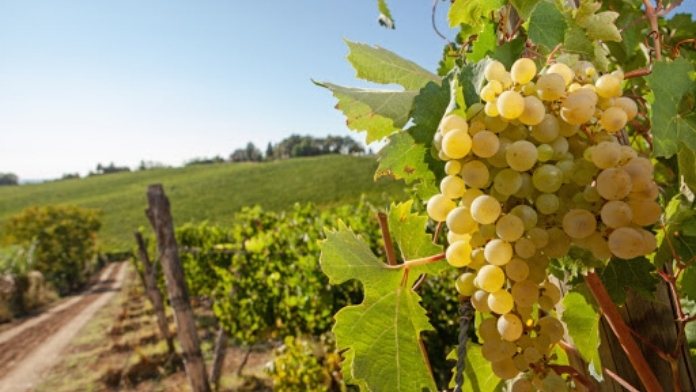
Hectares in Piedmont: 130
Piedmontese wines produced with Timorasso: ‘Derthona’ Colli Tortonesi DOC
Among the Piedmontese white wines of great interest is Timorasso. This fine Piedmontese white wine is obtained from the vine of the same name, which is grown on an area of about 130 hectares mainly located in the Tortonesi Hills, where it is recognized by the Timorasso dei Colli Tortonesi DOC appellation. Timorasso dei Colli Tortonesi DOC wines often indicate the label ‘Derthona’, a name that derives from the name of the ancient Roman city of Tortona which gives a distinctive and historical trait to the wines.
From the Timorasso grape, Piedmontese wines are born with good acidity and great mineral flavor, characterized by floral aromas that with aging are embellished with suggestive tones of salt and hydrocarbons (TDN).
In fact, Timorasso is a Piedmontese white wine particularly appreciated for its extraordinary longevity and richness of aromas precursors that develop over time. This aromatic complexity of the most advanced wines makes Timorasso an original winning combination with truffle-based dishes. Fortune favors the bold.
Arneis – Wines of Piedmont
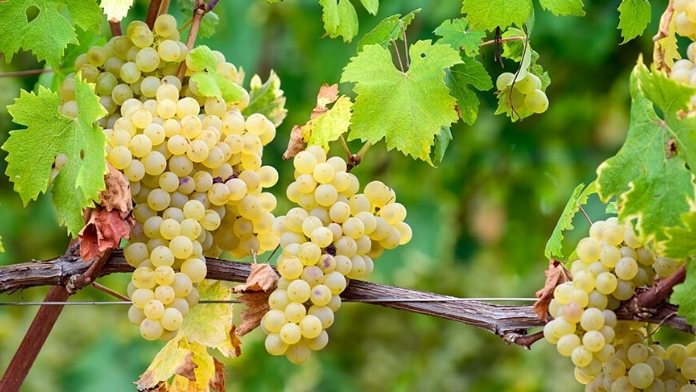
Hectares in Piedmont: 600
Piedmontese wines produced with Arneis: Roero Arneis DOCG – Terre Alfieri DOCG – Langhe DOC
Among the white wines of Piedmont, Arneis cannot be missing, obtained from the homonymous white grape variety that is grown on an area of about 600 hectares mainly located in the province of Cuneo. It is argued that the name Arneis derives from the Cuneo expression ‘tool’ or a small object, as it was contrasted with the more valuable and profitable Nebbiolo.
From the Arneis are obtained the fine Piedmontese white wine Roero Arneis DOCG, the Piedmontese Terre Alfieri DOCG wines and wines that belong to the Langhe DOC appellation.
Piedmontese white wines produced with Arneis can be both immediate and simple for daily consumption, and very refined. There are in fact not a few interpretations of Arneis of great complexity, elegance and longevity that can be ascribed to the best Italian white wines.
DOCG AND DOC OF THE BEST WINES OF PIEDMONT
What are the DOCG and DOC of the best Piedmontese wines? Piedmont is one of the regions with more designations of origin in Italy, although there are no IGTs. In fact, it boasts 18 DOCG, 41 DOC and 0 IGT, with about 80% of the wine production destined for designations of origin.
DOC and DOCG – Red Wines of Piedmont
Impossible not to mention the timeless Barolo DOCG and Barbaresco DOCG obtained from Nebbiolo grapes among the best Piedmontese DOCG red wines, but also Nizza DOCG, Barbera d’Asti DOCG and Barbera del Monferrato Superiore DOCG, Dolcetto di Dogliani DOCG, Dolcetto di Diano d’Alba DOCG and the Ruchè di Castagnole Monferrato DOCG.
Of great interest among the Piedmontese red wines are also Gattinara DOCG, Ghemme DOCG, Roero DOCG.
DOC and DOCG – White and Sparkling Wines of Piedmont
Among the best white wines of Piedmont are the Gavi DOCG and the Roero Arneis DOCG, the “ Derthona ” Colli Tortonesi DOCG obtained from Timorasso grapes, the Asti DOCG sparkling wine, Moscato d’Asti DOCG and the Arbaluce di Caluso DOCG In the dry, sparkling and passito versions.
Of great interest among wines of Piedmont are also the classic method sparkling wines Alta Langa DOCG
To learn more, read the article dedicated to the best white wines of Piedmont.
BAROLO – Wines of Piedmont
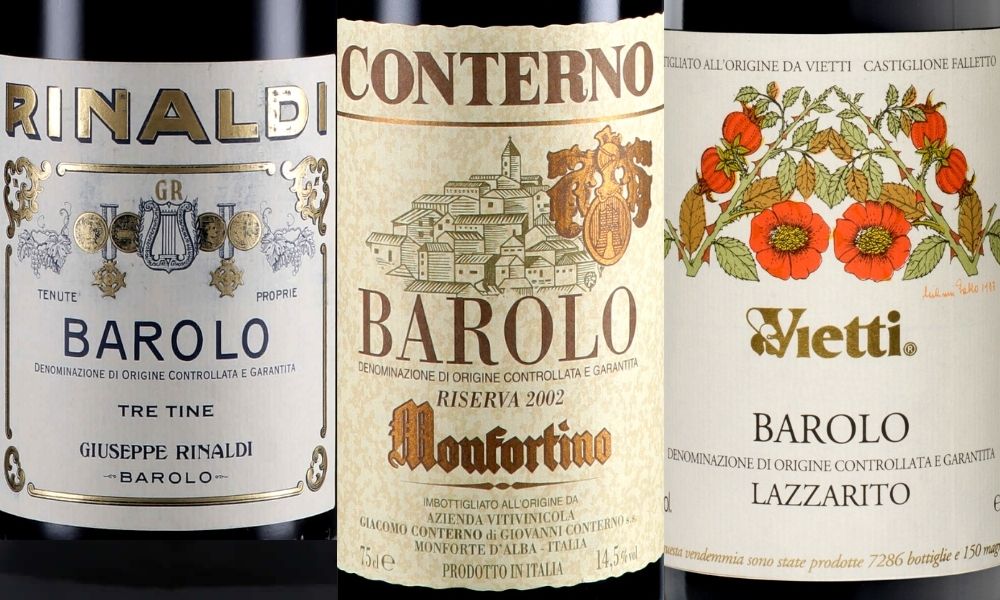
Among the Piedmontese DOCG wines, Barolo is certainly the most iconic. Barolo was born in the heart of the Langhe in the nineteenth century from the vineyards of the Marquis Tancredi Falletti and Giulia Colbert Falletti of Barolo thanks to Paolo Francesco Staglieno, who produced the estate’s first dry version Nebbiolo in 1830 and thus became the pioneer of Piedmontese enology.
Barolo immediately became a noble and appreciated wine, so much so that it became the spokesman of Piedmont and the Savoy in all the courts of Europe, also thanks to the support of Count Camillo Benso di Cavour and King Vittorio Emanuele II.
Considered ” the king of wines and the wine of kings ”, this iconic Piedmontese red wine is today produced in the province of Cuneo, near Barolo, Castiglione Falletto and Serralunga d’Alba and part of the territories of the municipalities of La Morra , Monforte d’Alba, Roddi, Verduno, Cherasco, Diano d’Alba, Novello and Grinzane Cavour.
Barolo is produced from 100% Nebbiolo grapes and requires a minimum aging of 38 months (18 of which in wooden barrels) and can add the mention ” Riserva ” after 5 years of aging. It is considered one of the longest-lived wines in the world, thanks also to the strong tannic component of Nebbiolo, and is expressed differently according to the areas, crus and vintages.
A Barolo produced in Tortonian soils, as in the areas of Barolo and La Morra, will be roughly long-limbed, fresh and elegant and with an olfactory finesse of floral-fruity notes.
A Barolo born on the Helvetian land, tending to be more alcoholic, structured and long-lived, as in the wines produced from the vineyards of the municipalities of Monforte d’Alba, Castiglione Falletto and Serralunga.
Generally it appears as a garnet red wine, with intense and elegant aromas of flowers and ripe fruit, often with tertiary notes of spices and tar. In the mouth it has great intensity and persistence, all accompanied by a great acid-tannic balance.
Perfect in combination with well-structured dishes such as Langhe Ragù or Wild Boar in civet with polenta, Barolo is also an excellent meditation wine, especially if dated and of a good vintage.
To learn more, read the article dedicated to the best Barolos and the article dedicated to the food-Barolo combination.
BARBARESCO – Wines of Piedmont
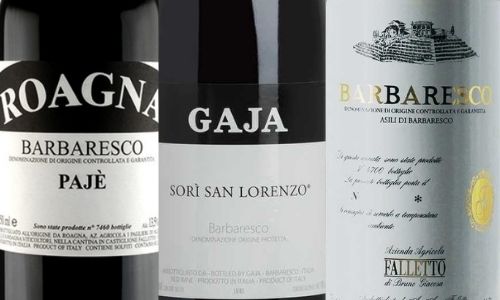
Among the Piedmontese DOCG wines, Barbaresco is one of the most famous and appreciated in the world. Barbaresco DOCG is a Piedmontese red wine typical of the Langhe, produced in the province of Cuneo in the municipalities of Barbaresco, Neive, Treiso and the hamlet of ” San Rocco ” in the province of Alba.
Another great expression of Nebbiolo, Barbaresco owes its fame to Domizio Cavazza, founder of the Cantine Sociali di Barbaresco in 1894 and director of the renowned oenological school of Alba.
Barbaresco is produced from 100% Nebbiolo grapes and requires aging for 26 months, 9 of which in barrels and for at least 50 months to bear the mention ” Riserva ”. The soils of this DOCG are typically hilly and calcareous-clayey and Nebbiolo is raised by the espalier with Guyot pruning.
Barbaresco too, like Barolo, is a wine that fully reflects the terroir and expresses itself differently depending on the production area. It generally appears as a garnet red wine tending to orange with aging, with very intense and characteristic aromas. The taste is dry and harmonious, with balsamic tertiary notes, tar and roasting that develop with aging.
It is considered the roast wine par excellence, but it is also excellent in combination with typical Piedmontese dishes, such as grilled Fassona cuts or game, but also with seasoned foods, mushrooms and truffles.
FOOD PAIRING WITH WINES OF PIEDMONT
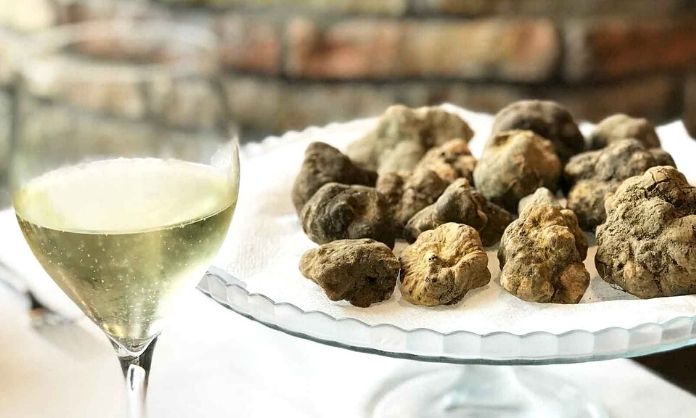
What to pair with Piedmontese wines? Piedmont boasts an enviable gastronomic tradition, rich in culinary excellence such as cheeses and cold cuts, hazelnuts, mushrooms, truffles and game.
Among the most identifying recipes of this region we find the Bagna Cauda (translatable as “ hot sauce ”), a dish of peasant origin typical of the harvest period which consists of a sauce based on garlic, desalted anchovies and olive oil used as Sauce for Piedmontese autumn vegetables such as peppers, cardoons and celery.
Piedmont also offers a wide range of typical cheeses such as Fonduta, often used in combination with truffles, Gorgonzola, Piedmontese Toma, Bra, Robiola and Bruss delle Langhe.
Among the meat dishes we remember the Braised with Barolo, a typical dish of Alba prepared with beef from the Fassona breed, the Vitel Tonnè (or Vitello Tonnato), the Boiled meat typical of Monferrato and the Wild boar in civet with polenta.
In addition, Piedmont is also nationally recognized for traditional sweets such as Amaretti di Mombaruzzo, Torrone d’Alba, Panna Cotta and Marron Glacé, but also for chocolates such as gianduiotti and truffles in the Turin area.
What are the best wines of Piedmont?
What are the best Piedmontese wines? Choosing is a difficult undertaking, which in any case inevitably lies within the limits of a subjective opinion, which as such, by definition, is deficient and arbitrary. We have compiled our list of virtuous quality interpretations of Piedmontese wines from the best wineries according to our evaluations.
However, it remains essential to underline that the best Piedmontese wines are those that are able to excite us, also by binding themselves to contingent situations and unrepeatable and intimate moments of our life. Therefore, we invite you to discover all the wineries that produce Piedmontese wines in their uniqueness, so that you can independently find and choose the wine that can be counted for you among your best Piedmontese wines.





